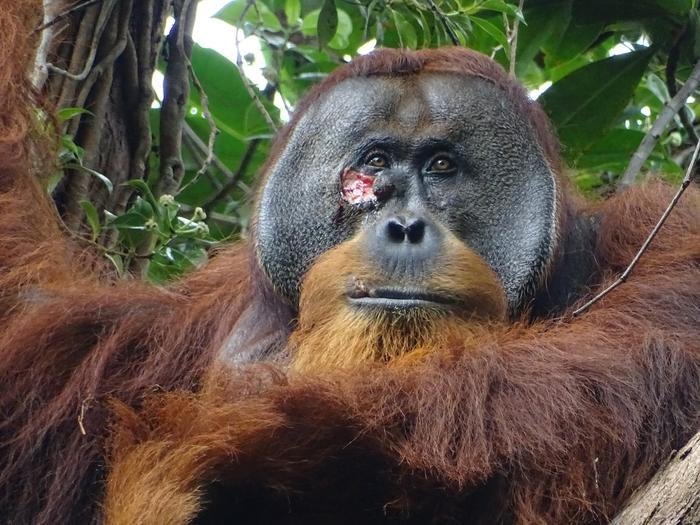Making a Monkey Out of Western Medicine
/By Pat Anson
When it comes to using plants to self-medicate, chimpanzees and other primates may be a whole lot smarter than their human counterparts.
The latest evidence comes in a new study published in PLOS ONE, which found that wild chimpanzees consume plants and trees with medicinal properties that relieve pain, reduce inflammation and fight infection. The chimp study follows right on the heels of another recent observational study, about an orangutan that used a plant to help heal a facial wound.
An international team of researchers spent 8 months following two groups of chimpanzees in Uganda’s Budongo Forest, recording what plants and trees the chimps ate, and whether they were sick or injured. They also analyzed the animals’ feces and urine to check for parasites and elevated levels of immune cells.
The researchers identified 13 plant species with little nutritional value that the chimps seem to instinctively know would help them feel better and recover from illness. The animals would either swallow the leaves whole or chew on bitter bark and tree sap.
One adult chimp with a severe hand injury was observed moving away from his group to spend a few minutes alone eating a fern called Christella parasitica. When researchers later tested the fern, they found it had “highly anti-inflammatory properties” that may have reduced pain and swelling in the chimp’s hand.
Other chimps with gastrointestinal problems were seen chewing on the bark of the Alstonia boonei tree, which has long been used by indigenous natives to treat snake bites, asthma and wounds.
Notably, both Christella parasitica and Alstonia boonei are cyclooxygenase-2 (COX-2) inhibitors, the same enzyme that is targeted by aspirin and other nonsteroidal anti-inflammatory drugs (NSAIDs) to reduce inflammation and relieve pain and fever.
Rather than banning or restricting plant-based medicines -- as we have seen with cannabis, kratom and opium -- researchers say we should be looking at “forest pharmacies” for ways to benefit our own healthcare.
“Our findings of strong antibacterial growth inhibition across numerous plant species growing in Budongo have promising implications for our ability to discover novel compounds in existing forest habitats,” researchers said.
“As we learn more about the pharmacological properties of plants ingested by chimpanzees in the wild, we can expand our understanding of their health maintenance strategies. Our results provide pharmacological evidence, from in vitro assays of plant parts consumed by wild chimpanzees collected in situ, for the presence of potent bioactive secondary plant metabolites in Budongo chimpanzee diets for a variety of potential illnesses.”
Whether medicinal plants are consumed intentionally or unwittingly by chimps and other animals remains an open question. But the field of “zoopharmacognosy” – the study of animals using plant-based medicine – could be the answer to many chronic illnesses that Western medicine can’t cure or treat effectively.
“For this to happen, however, it is imperative that we urgently prioritize the preservation of our wild forest pharmacies as well as our primate cousins who inhabit them,” researchers concluded.




